EDUCATIONAL BARRIERS AND COPING STRATEGIES OF PHYSICALLY CHALLENGED STUDENTS OF SECONDARY SCHOOL EDUCATION
₦10,000.00 ₦3,000.00
ABSTRACT
This study examined the “Educational barriers and coping strategies of physically challenged students of secondary school education in some selected secondary schools in Afijio Local Government area of Oyo State” in order to achieve this, 180 students were randomly sampled as respondents. The findings therefore recommends that the research on educational barriers and coping strategies of physically challenged students in secondary school should be adopted by stakeholders in the field of education. This will help in encouraging physically challenged students to go to school more. Also, federal government should support all students who are physically impaired by providing them free bus to school. Also, the Federal meal that government are providing for public school students should be given more attention so that the meal can circulate all the schools in Nigeria.
Description
CHAPTER ONE
INTRODUCTION
1.1 Background to the Study
A disability is a measurable impairment or limitation that interferes with a person’s ability, for example, to see, walk, lift, hear or learn. It may be referred to as a condition that substantially limits one from more basic physical activities, such as walking, climbing stairs, reaching, lifting, or carrying (Okoye, 2010). Disability, impairment and handicap have been used interchangeably but they do not have the same meaning completely, although they are interconnected. A person who has a physical or intellectual problem is said to be impaired e.g. a person who has short-sightedness has a vision impairment. In a situation whereby the person’s impairment means that he is unable to function in the same way as most people in that particular area, then he is considered disabled. For example a person who has glaucoma does not have a full field of vision as most people and therefore has a visual disability. Then, if the person’s disability means that he cannot have access to the same things as the majority of people, he is considered handicapped. For example a blind person who does not have access to assistive devices such as the cane, glasses, guide dog and so on is said to be visually handicapped (Okoye, 2010).
Physical disability is not a synonym for disability handicap. Rather handicap is a disadvantage that occurs as a result of a disability or impairment. It refers to the external circumstances, which place people with disabilities at a disadvantage in relation to their peers and the norms of society. Handicaps include physical barriers such as inaccessible entrances to buildings, barriers to education, employment opportunities and negative public attitudes. The degree of disadvantage or the extent of the handicap is often dependent on the adaptations made by both the individual and society. Therefore, the extent to which a disability handicaps an individual varies greatly.
Frequently, however, the individuals’ abilities are restricted further by these handicaps. Studies have shown that a handicap is a function of the relationship between the individual and the social and physical environment (Okoye, 2010). Some people with severe physical disabilities must rely on assistive devices that take advantage of their specific abilities and on their ability to use assistive devices with standard products. Commonly used assistive devices include mobility aids e.g. crutches, wheelchairs, manipulation aids (e.g. prosthetics, orthotics), communication aids (e.g. single switch based artificial voice), and computer/device interface (e.g. eye gaze-operated keyboard).
Also, the ability to cope with disability varies from one individual to another and also on the area in which the individual encounters the difficulty. For example, a person who uses a wheelchair would be much less handicapped in a building that is wheelchair accessible than in one that is not. In other words the use of aids such as glasses, hearing aids, wheelchairs, ramps e.t.c prevents the disabled person from being handicapped in certain areas. Physical disability can also mean being unable to undertake the same range of activities as other people. This includes people with mobility disabilities, (people who have some degree of difficulty in walking) people who have difficulty using their hands or arms and people with restricted growth not putting aside those who are blind or partially sighted and those who do not have the ability to hear clearly. These people may have been born with disability or may develop it. Physical disabilities may result from permanent injuries to the brain, spinal cord, eyes and other parts of the body which is as a result of motor accidents, wars, natural disasters and diseases such as polio.
Physical disability is a common experience of everyday life. It often causes a person to use special equipment like wheelchair, cane or prosthetic limb. Persons with physical disabilities may have difficulty with movement or self-care, but are otherwise just like anyone else. It is important to note that disability prevents somebody from being able to do something that other people of his age and the community does because of the body deficiency. Disabilities or impairment often require individuals to find non-traditional methods to perform certain activities and to achieve certain goals.
Disability restricts easy accessibility to the facilities within the environment and this constitutes the major or real problem facing disabled people. It can lead to frustration in some cases, which adversely degenerate to an individual not being able to actualize his aspirations (Crisp, 2002). Many physically challenged people encounter problems in going about their activities of daily living. Some of them who are students in higher institutions are not left out. One the biggest problem is their inability to access such important places as lecture halls, cafeteria, hostels and other places of need within the school compound. Most often the school environment is not designed to be accessible to students whose needs are not the same as that of ordinary students. Coupled with this also is the issue of lack of necessary and relevant equipment or other types of support services like textbooks in Braille, homemaker services, sign language interpreters, counselors and so on. When these are lacking, the physically challenge student may not be able to benefit fully from the school system. There may also be feelings of loss of value in society and decrease in self worth which also result in the disabled person perceiving himself/herself as a burden to the society. This consequently creates the sense of isolation among the individual.
Generally in situations where a person with disability is not able to cope, negative perception that people have about disabled persons may begin to manifest. This can result in stereotyping, derogatory labeling, and depersonalization. Inability to cope may also lead to the portrayal of people with disability as helpless, mindless, suffering and deserves sympathy and alms. On this the researcher intends to carry out a study on educational barriers and coping strategies of physically challenged students of secondary school education.
1.2 Statement of Problems
Education is an important legacy that every person needs in order to be relevant in the society. Despite the fact that the educational system in Nigeria has become 9-3-4, the students will still pass through six (6) years) of primary school, 3 years of junior secondary school and 3 years of senior secondary school respectively before going to higher institution to spend other years. But students who are physically handicapped are bound to have challenges in their educational pursuit. On this, it becomes imperatives for researchers to look into strategies that can assist students who are physically challenged on their educational pursuit.
1.3 Purpose of the Study
The purpose of this study is to look into the barriers faced educationally by the physically challenged students and the coping pattern that is to be used in the teaching-learning process.
1.4 Research Questions
- What coping strategies do physically challenged students adopt in order to achieve their academic pursuit in Afijio Local Government Area of Oyo State?
- What are the school support systems that are available to physically challenged students in Afijio Local Government area of Oyo State?
- In what way is government supporting students who are physically challenged in Afijio Local Government Area of Oyo State?
1.5 Significance of the Study
This study helps to show the educational barriers and coping strategies of physically challenged students of secondary school education. The study is significant because it helps to show how important is students who are physically challenged to educational management. The research work is also significant as it will help improve educational pursuit of physically challenged persons by suggesting coping strategies that are suitable for them.
1.6 Scope of the Study
This research work is limited to some selected secondary schools in Oyo Afijio Local Government Area of Oyo State. Two schools will be visited in the Local Government and the name of the schools are:
- Sped International Secondary School, Oyo
- Akinmorin Grammar School, Akinmorin
1.7 Definition of Terms
Education: This is the process of impacting knowledge in students. It can be in a formal setting or non formal setting. An education that students go through in a school setting often takes place in classroom.
Barriers: This refers to the challenges facing the education of students with physical challenges. The barriers may be physical like financial support or material support. It can also be psychological barrier like parental crises or a particular psychological disorder
Strategies: This refers to the methods and systems of addressing the challenges that are facing the education of physically challenged persons.
Physically Challenged Student: These are students that are having difficulties in movement and in their physical well being
Secondary school Education: This is a post primary education that prepare the students for the higher institution education and the career they wish to focus in life. it is divided into two; junior secondary and senior secondary education. Each division consists of three years duration.
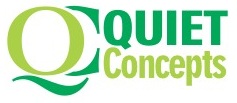
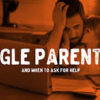

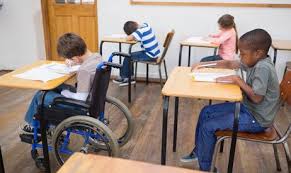
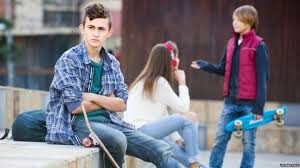

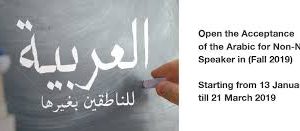
Reviews
There are no reviews yet.